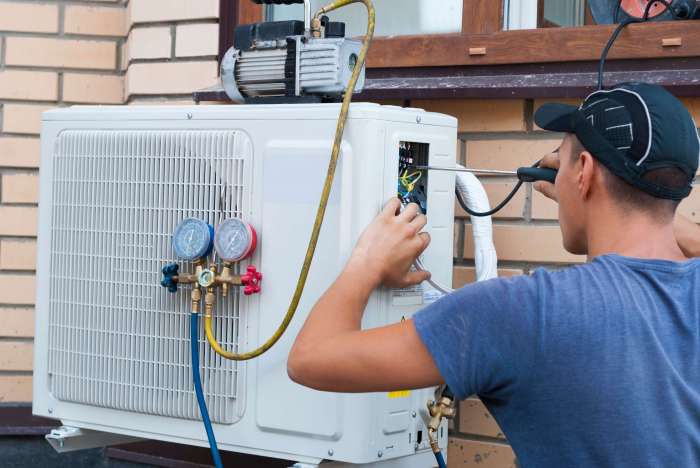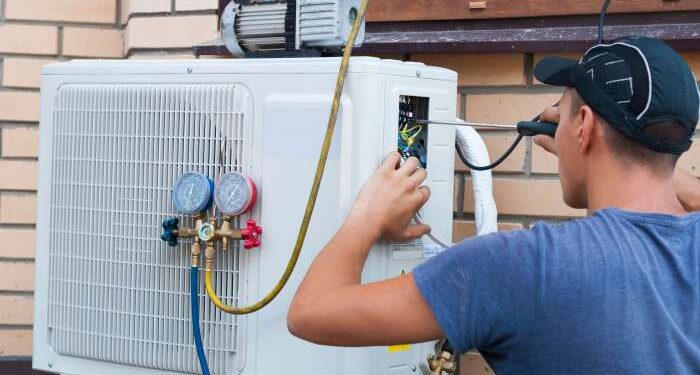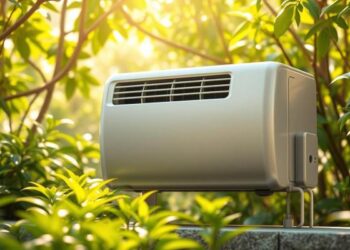When it comes to getting your home ready for air conditioner installation, there are a few key steps you need to take. From researching the best location to ensuring proper insulation, this guide will walk you through the process in a clear and concise manner.
Research and Planning

When preparing your home for air conditioner installation, it is crucial to conduct thorough research and planning to ensure a smooth process and optimal results.
Identify the Best Location for the Air Conditioner Installation
Determining the best location for your air conditioner installation is essential for efficient cooling and optimal performance. Consider factors such as the layout of your home, sunlight exposure, and proximity to electrical outlets. Ideally, choose a spot that allows for proper airflow and easy access for maintenance.
Determine the Size and Type of Air Conditioner Suitable for Your Home
Selecting the right size and type of air conditioner for your home is crucial to ensure effective cooling without unnecessary energy consumption. Consider factors such as the square footage of the space, insulation quality, and your cooling preferences. Consult with a professional to determine the most suitable option for your specific needs.
Check Local Regulations and Requirements for Air Conditioner Installations
Before proceeding with the installation, it is important to check local regulations and requirements regarding air conditioner installations. Permit may be required, and there may be specific guidelines to follow to ensure compliance with safety standards. Failure to adhere to these regulations could result in fines or other consequences.
Pre-Installation Preparation
Before your air conditioner installation, it's essential to take the necessary steps to ensure a smooth and successful process. This includes clearing the installation area, ensuring proper insulation and sealing, and arranging for any required electrical work to support your new air conditioner.
Clear the Installation Area
- Remove any obstacles or debris from the installation area to provide easy access for the technicians.
- Clearing the space will help prevent any delays or hindrances during the installation process.
Insulation and Sealing
- Make sure the installation location is properly insulated and sealed to maximize the efficiency of your new air conditioner.
- Proper insulation will help maintain a consistent temperature in your home and reduce energy consumption.
Electrical Work
- Arrange for any necessary electrical work to support the installation of your air conditioner.
- Ensure that the electrical system is capable of handling the power requirements of the new unit.
Equipment and Materials
When preparing for your air conditioner installation, it is essential to have the right tools and materials on hand to ensure a smooth process.
Required Tools
- Drill
- Screws
- Level
Necessary Materials
- Mounting brackets
- Duct tape
Consider a Smart Thermostat
Investing in a smart thermostat can help optimize energy efficiency in your home and enhance the overall performance of your new air conditioner.
Installation Process
When it comes to installing your air conditioner unit, it is crucial to follow the manufacturer's instructions carefully to ensure proper installation. This will help in maximizing the efficiency and longevity of your unit.
Mounting and Sealing
- Securely mount the air conditioner unit in the designated location, making sure it is level and stable.
- Properly seal the unit to prevent any air leaks, ensuring that it is tightly sealed to maintain optimal performance.
Connection and Testing
- Connect the air conditioner unit to the power source according to the manufacturer's guidelines, ensuring all connections are secure.
- After installation, test the functionality of the unit to ensure that it is cooling effectively and operating as expected.
Post-Installation Checks
After the air conditioner has been successfully installed in your home, it is crucial to conduct thorough post-installation checks to ensure everything is in proper working order.Inspect the installation for any gaps or loose connections. It is important to carefully examine the area where the air conditioner has been installed to check for any gaps or loose connections.
This will help prevent any potential leaks or inefficiencies in the system.Test the air conditioner to ensure it cools effectively. Turn on the air conditioner and let it run for a while to ensure that it is cooling the space effectively.
Check the airflow and temperature to make sure that the air conditioner is functioning as it should.Schedule regular maintenance to keep the air conditioner in optimal condition. Regular maintenance is key to ensuring that your air conditioner continues to work efficiently and effectively.
Be sure to schedule routine maintenance checks with a professional to keep your air conditioner in optimal condition for years to come.
Closing Summary
In conclusion, preparing your home for air conditioner installation is crucial for ensuring optimal performance and efficiency. By following these steps, you can set yourself up for a cool and comfortable living space.
Questions Often Asked
What are the best tools for air conditioner installation?
Some essential tools include a drill, screws, and a level for proper installation.
Is it necessary to check local regulations before installing an air conditioner?
Yes, it's important to ensure compliance with local regulations and requirements to avoid any issues.
How can I optimize energy efficiency during installation?
Consider purchasing a smart thermostat to help regulate temperature and save energy.





![How To Avoid Contractor Scams [Infographic]](https://airconditioner.infotangerang.id/wp-content/uploads/2025/10/how-to-avoid-contractor-scams-feat-120x86.png)








